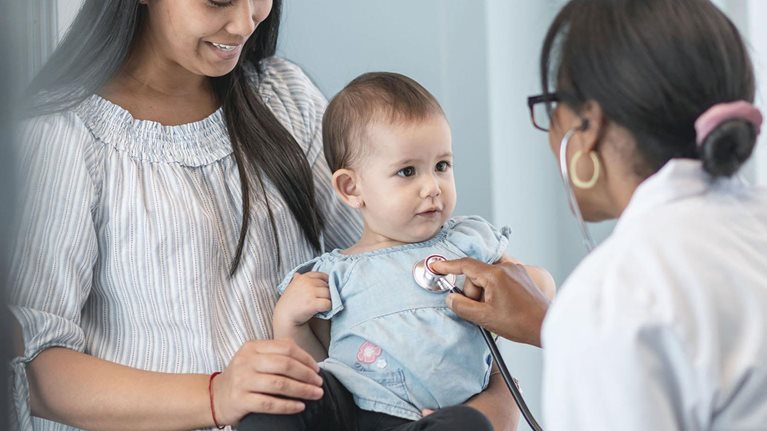Clinical factors are responsible for just 20 percent of individuals’ health outcomes; the remainder can be attributed to factors such as health-related social needs (HRSNs).1 Increasing recognition of the impact of these needs on consumers’ health and livelihoods is driving momentum across the healthcare ecosystem to integrate health and social care, creating opportunities for healthcare entities to design consumer-centric models of care tailored to individual needs and preferences. This article synthesizes insights gleaned from a survey of more than 5,000 US consumers that highlights how HRSNs are evolving; their potential impact on healthcare use, preferences, and outcomes; and actions healthcare entities may consider to effectively support consumers’ needs (see sidebars, “Survey methodology” and “Definitions”).
Key findings include the following:
- Health-related social needs such as childcare, social support, and transportation are very common; nearly half of all consumers (45 percent) reported experiencing at least one on a regular basis. Among consumers reporting health-related social needs, the majority have more than one unmet need.
- HRSNs affect consumers across socioeconomic levels and insurance types, suggesting programs could be designed to meet the needs of a variety of consumer segments.
- Consumers with HRSNs were more likely to report poor physical and mental health and barriers to accessing care.
- Consumers with multiple HRSNs were more likely than other groups to report seeking support from family or friends, yet roughly 20 percent do not seek support.
- Consumers said they want health systems, health insurance companies, and employers to better understand their needs, suggesting these entities could play a greater role in meeting those needs.
Looking ahead, health insurance companies, health systems, employers, and others could consider a range of actions to address health-related social needs. For example, they could design consumer-centric solutions, explore a network of partnerships to address the wide range of needs, tailor support to caregivers and families rather than solely to individuals, and focus on access and flexibility.
The majority of individuals with an unmet HRSN have more than one
Unmet HRSNs are very common; nearly half of all consumers (45 percent) reported experiencing an unmet HRSN on a regular basis. Among consumers reporting unmet HRSNs, the majority have multiple unmet needs.
Childcare (among those with children), material status (the ability to pay for utilities or purchase basic goods), and social support (feeling lonely, not having someone to count on, or missing having someone to talk to) were the three most reported needs, with nearly one-third of consumers experiencing each of these.

Unmet HRSNs are widespread but disproportionately affect certain groups
Unmet HRSNs cut across socioeconomic status. While consumers with lower incomes reported a greater prevalence of unmet HRSNs, nearly one-third of consumers with incomes of $100,000 to $149,999 also reported unmet HRSNs. Similarly, unmet HRSNs are prevalent across insurance types. While Medicaid, dual insurance, and uninsured individuals reported unmet HRSNs most heavily, two or more HRSNs also affect nearly one-third of individuals reporting employer-sponsored insurance. This suggests screening for HRSNs should take place across patient segments, not just for Medicaid members.
A review by race and ethnicity shows that minority groups report being more heavily affected.

Unmet HRSNs may go hand in hand with other health and care access challenges
Consumers with unmet HRSNs reported worse physical and mental health. Those with two or more unmet HRSNs reported poor physical health 3.5 times and poor mental health 3.0 times more than those with no unmet needs.
Furthermore, unmet HRSNs may pose barriers to receiving needed care. Nearly 50 percent of consumers with multiple unmet HRSNs said they have not received all needed care, compared with just 12 percent of those reporting none. A review of emergency room usage highlights this difference. Consumers reporting two or more unmet HRSNs were three times more likely to report visiting the emergency room “frequently” than those reporting none.1
Addressing consumers’ unmet HRSNs and ensuring sufficient access to care, particularly preventive care, could play a pivotal role in improving mental and physical health.

Consumers want health systems, insurers, and employers to better understand their HRSNs
When seeking HRSN-related support, consumers said they primarily go to family or friends (23 percent), followed by community organizations and government agencies (17 percent). Family, friends, and even community organizations may be a first resort given the comfort, convenience, and speed of support. But roughly 20 percent of consumers neither seek support nor look to alternative sources.
While fewer consumers facing multiple HRSNs seek support from health systems, insurers, or employers, a majority of those consumers said they want these entities to understand their needs. These entities may have an opportunity to play a greater role in understanding and meaningfully acting on these needs.

Health systems, insurers, and employers have an opportunity to better support consumers by improving experiences across core offerings and providing greater support for unmet HRSNs
When asked about their top preferences for support related to physical, social, and mental well-being, consumers identified convenience, personalization, and transparency. They highlighted a desire for better experiences in areas such as scheduling appointments, navigating billing and other processes, and understanding benefits offerings.
Consumers also expressed a consistent desire for health systems, insurers, and employers to support their unmet HRSNs in some way (for example, by providing more information on available support and connecting individuals with community organizations). This suggests that in addition to core experience improvements, these entities have an opportunity to support consumers in addressing their unmet HRSNs.
Beyond the top three preferences, other high-ranking preferences included flexibility, cost and affordability, and direct HRSN support (for example, medically tailored meals and other direct food provisions).

Conclusion
Entities across the healthcare ecosystem can take action to better meet consumers’ health-related social needs:
- Recognize that HRSNs affect consumers across socioeconomic levels and insurance types, and design programs to meet the needs of a variety of consumers.
- Design consumer-centric solutions (for example, with consumer input and involvement) to ensure they are tailored to be usable and effective (for example, matching personalized consumer preferences, ensuring transparency, prioritizing convenience, and reflecting cultural sensitivity).
- Explore a network of partnerships across the healthcare ecosystem to address a range of needs, given that consumers typically face multiple unmet needs.
- Consider the needs of caregivers and the family broadly—in addition to the individual—because roughly one-fourth of consumers reported seeking help from friends and family.
- Focus on improving convenience and personalization in HRSN programming, because this may significantly reduce hurdles to receiving care and other benefits.
For more information on tactical actions that health systems can take, see Tamara Baer, Erica Coe, Anne Koffel, and Jordan VanLare, “Patients struggle with unmet basic needs: Medical providers can help,” McKinsey, April 1, 2022.


